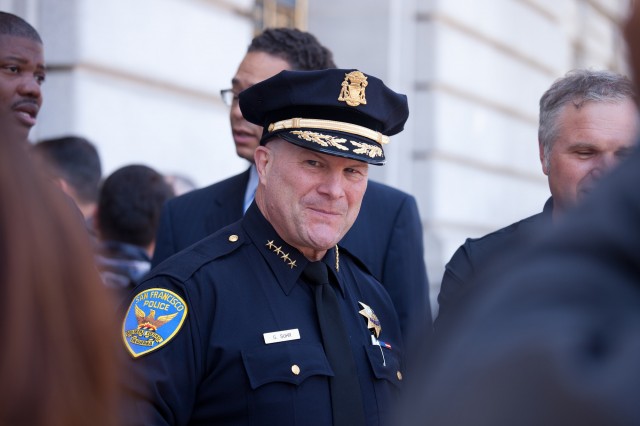"We process faces as a whole, and not by individual features," she said.
There have been 316 post-conviction DNA-based exonerations to date in the United States. University of Virginia law professor Brandon Garrett studied the first 250 and published his findings in 2011. Among the findings were that 76 percent of the cases involved at least one mistaken witness identification, and 36 percent of the cases involved mistaken IDs from multiple witnesses.
Dysart described witness memory as a form of trace evidence, like fingerprints or a strand of hair. And, like other kinds of trace evidence, memory can be contaminated — in this case by a composite sketch.
"What it actually does is affects the memory and how the memory for the actual perpetrator is stored," Dysart said. "The best image, the most recent image, the one they [the witness] saw the longest, is the composite sketch."
And 25 percent of DNA exoneration cases studied started with a composite sketch, Dysart said.
Fast-forward through the investigation process, and the witness will be asked by investigators to identify the suspect either in a photo lineup or in person. And here's where the reforms really kick in.
The Innocence Project, several Bay Area police departments and district attorneys have adopted a policy of "double-blind, sequential lineups." Think pretty much the opposite of any lineup on TV. Instead of showing all the potential suspects together — usually one actual suspect and several "fillers" — they're shown one at a time. And the officer or detective working with the witness doesn't know who the suspect is.
San Francisco Police Chief Greg Suhr put those ideas into practice in early 2012, a reform he made early in his time as chief that he called a "no-brainer."
"Most people that are practical, they’re not going to see this as a groundbreaking, earth-shattering difference, whether the pictures are in a pile or six across," Suhr said.
But the psychological difference might be huge. When presented with a multiple-choice question, Dysart said, people work through a kind of process of elimination and try to select the best answer. Like the composite sketch, their answers tend toward a person who looks like the perpetrator instead of the person who is the perpetrator.
“When I’m giving my students a final exam, I tell them to pick the best answer," Dysart said, "and if you don’t know, guess. But nobody’s going to prison.”
It's important to note that none of these factors leading to misidentifications is thought to be intentional. It all happens in the subconscious part of the brain. Same goes for a detective involved in the case who might drop subconscious cues about who the actual suspect is unintentionally, which can affect the witness subconsciously.
Santa Clara County District Attorney Jeff Rosen said his office has insisted on double-blind, sequential lineups since 2002, and the office also has a unit dedicated to re-examining past convictions to ensure the wrong person wasn't sent to prison.
Reform advocates say double-blind, sequential lineups have a dual effect. They can keep the wrong people out of prison and lead to catching the right person. They're also stronger in court, especially when the process is recorded with video.
"There's a tipping point coming," said David Onek, executive director of the Northern California Innocence Project. He added that Bay Area counties are joined by pockets across the nation embracing these techniques. "We're very close to that point."
Rape survivor Jennifer Thompson gave a gripping account of her experience with mistaken identification and the impact it had on her and a wrongfully convicted man, Ronald Cotton, who spent more than a decade in prison for the crime. He was exonerated by DNA evidence in 1995 and met Thompson years later. She began her story in 2000 before returning to the 1984 rape, for which Bobby Poole eventually confessed.
